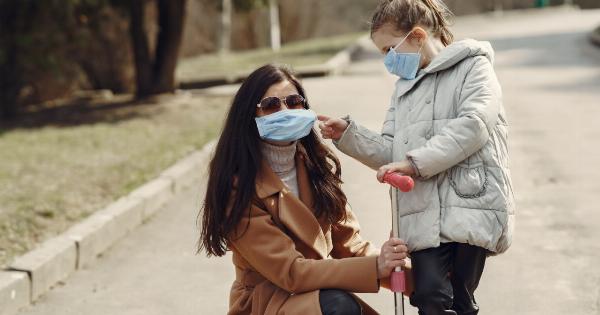Infant mortality and infections continue to be major concerns worldwide. Every year, millions of infants suffer from preventable illnesses and sadly lose their lives.
As a mother, it is crucial to understand the responsibility we have in ensuring the well-being and health of our little ones. By taking proactive measures, we can significantly reduce infant mortality rates and prevent infections.
This article will explore various strategies and practices that mothers can adopt to protect their infants, promoting a healthier and brighter future for our children.
1. Vaccination: Shielding Against Deadly Diseases
Vaccines are one of the most effective ways to protect infants from life-threatening illnesses. They stimulate the immune system to produce immune responses, helping the body fight off diseases.
As a mother, it is essential to follow the recommended vaccination schedule provided by healthcare professionals. Vaccinations such as those for measles, mumps, rubella, polio, hepatitis B, and diphtheria-tetanus-pertussis (DTaP) provide crucial protection against severe illnesses that can lead to infant mortality.
By ensuring your child is vaccinated according to the recommended schedule, you are taking a critical step in reducing the risk of infections and potential loss of life.
2. Proper Nutrition: Building Strong Immune Systems
A well-balanced and nutritious diet plays a vital role in the development of a strong immune system.
Breast milk is often recommended as the primary source of nutrition for infants, as it contains essential antibodies that protect against infections and promote healthy growth. Breastfeeding provides the optimal nutrition needed for infants, enhancing their immune response and reducing the risk of severe illnesses.
If breastfeeding is not possible, consult with healthcare professionals to ensure the right formula is chosen to provide adequate nutrition for your baby’s needs. Additionally, introducing a diverse and nutrient-rich diet as your child grows will help in maintaining their immune system’s strength, reducing the vulnerability to infections.
3. Hygiene Practices: Shielding Against Harmful Pathogens
Poor hygiene practices can significantly contribute to the spread of infections and increase the risk of infant mortality. As a mother, it is essential to maintain good personal hygiene and teach your child the importance of cleanliness.
Some key practices include:.
– Frequent handwashing: Wash your hands using soap and clean water before handling your baby, before preparing meals, and after changing diapers. Encourage older children to wash their hands regularly as well.
– Sterilizing equipment: Clean and sterilize feeding bottles, pacifiers, and other equipment after each use. Boiling them or using sterilizing solutions recommended by healthcare professionals can effectively eliminate harmful pathogens.
– Proper disposal of waste: Dispose of diapers, tissues, and other waste in a hygienic manner to prevent the spread of infections within your home.
By incorporating these hygiene practices into your daily routine, you can create a safer environment for your child, reducing the risk of infections and improving their overall well-being.
4. Safe Sleeping Practices: Reducing the Risk of SIDS
Sudden Infant Death Syndrome (SIDS) is a devastating event that claims the lives of many infants each year. While the exact cause of SIDS is unknown, there are preventive measures mothers can take to reduce the risk:.
– Place your baby on their back to sleep: This position reduces the risk of suffocation and other breathing difficulties.
– Use a firm and flat mattress: Ensure your baby’s sleep surface is firm and free of pillows, blankets, or stuffed animals that could pose suffocation hazards.
– Avoid overheating: Dress your baby in appropriate clothing for the temperature and keep the room at a comfortable temperature.
– Share sleep proximity, not a sleeping surface: While having your baby sleep in your room for the first six to twelve months is recommended, it is important to avoid sharing the same bed to minimize the risk of accidental suffocation.
5. Regular Check-ups: Monitoring Growth and Development
Regular check-ups with healthcare professionals are essential to monitor your baby’s growth and development and detect any potential health issues early on.
These visits allow healthcare providers to ensure your child is meeting developmental milestones and provide necessary vaccinations and screenings. By staying up-to-date with check-ups, you empower healthcare professionals to identify and address potential health concerns promptly, reducing the risk of complications and infant mortality.
6. Avoiding Smoking and Secondhand Smoke
Exposure to tobacco smoke has been linked to numerous health problems in infants and children, including respiratory infections, asthma, and sudden infant death syndrome.
It is crucial to avoid smoking during pregnancy and protect your child from secondhand smoke even after birth. Secondhand smoke can be equally harmful, increasing the likelihood of respiratory issues and other health complications.
Establish a smoke-free environment for your child, whether at home or in public places, to decrease the risk of infections and support their healthy development.
7. Emotional Well-being: Nurturing a Safe and Loving Environment
A mother’s love, care, and emotional support play a vital role in an infant’s overall well-being. Creating a safe and nurturing environment promotes healthy emotional development and strengthens the immune system.
Show affection, respond to your baby’s needs promptly, and provide a secure and positive atmosphere. Supporting your child’s emotional well-being contributes to reducing stress levels, which, in turn, enhances their immune response, reducing the risk of infections and related complications.
8. Educating Others: Spreading Awareness and Promoting Healthy Practices
Don’t keep the knowledge you gain to yourself. Educate others within your community about the importance of reducing infant mortality and preventing infections.
Share your experiences, tips, and information on vaccination, nutrition, hygiene practices, and safe sleeping habits. By spreading awareness and encouraging healthy practices, you can create a ripple effect, potentially saving the lives of many infants and positively impacting the well-being of future generations.
9. Building a Support Network: Guidance and Encouragement
Raising a child can be challenging, and having a supportive network of family and friends can make a significant difference.
Surround yourself with individuals who understand the importance of infant health and are willing to provide guidance and encouragement. Lean on your support network for emotional support, advice, and assistance whenever needed. Together, you can navigate the journey of motherhood, ensuring the well-being of your child and reducing the risk of infant mortality and infections.
10. Stay Informed: Up-to-date Knowledge
Being a responsible mother means staying informed about the latest developments in infant health and safety. Keep yourself updated with reliable sources of information such as healthcare providers, reputable websites, and research publications.
By staying informed, you can make well-informed decisions regarding vaccination, nutrition, and other important aspects of your child’s health.
As a mother, you hold a tremendous responsibility in reducing infant mortality and preventing infections.
By following the strategies outlined above and adapting them to your specific circumstances, you can create a healthy and safe environment for your child to thrive. Remember, your actions and decisions have the power to shape the destiny of your child, promoting a brighter and healthier future for all.






























